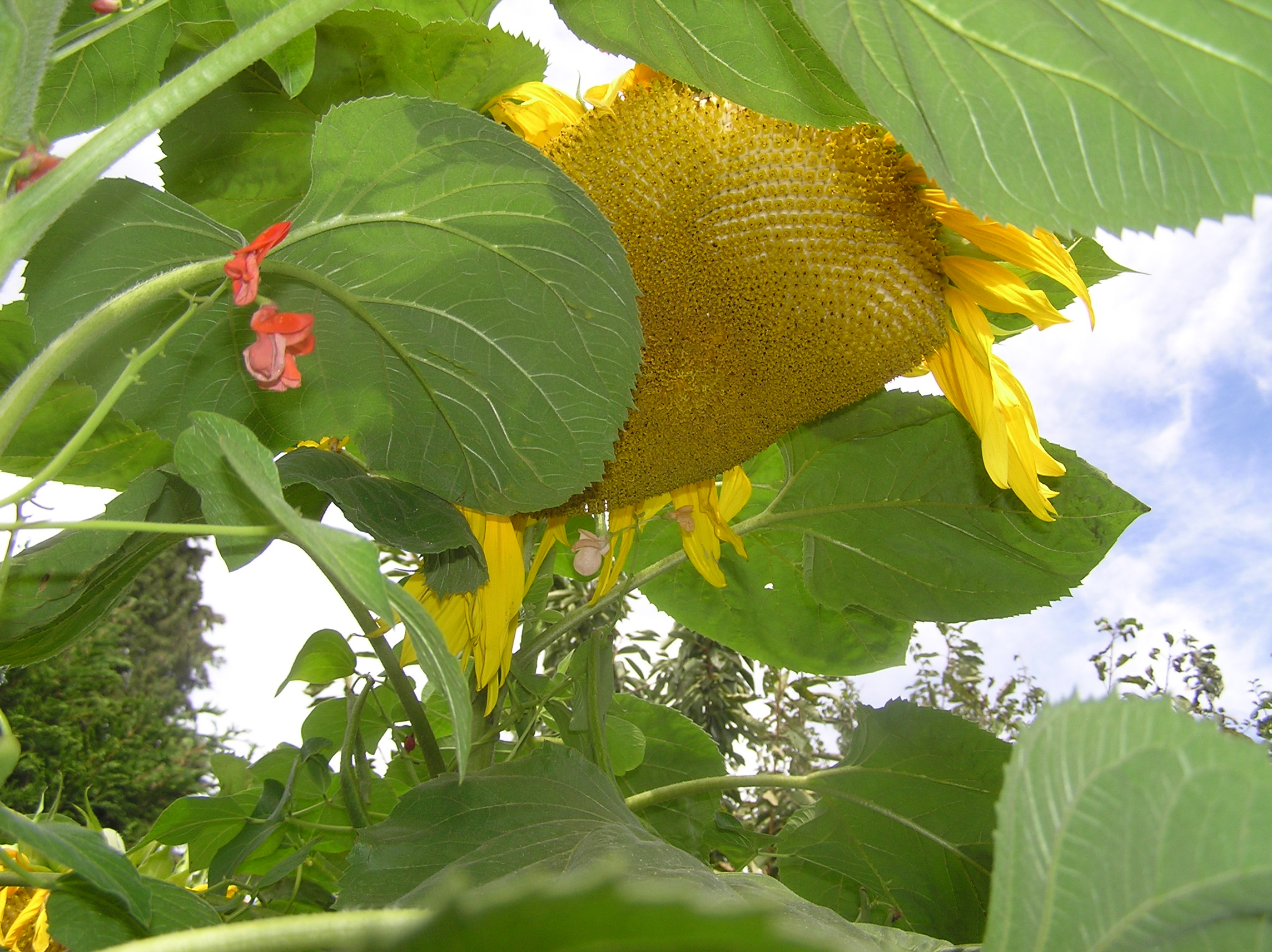This year I lost 150 tomato starts. I was devastated. I love to plant new varieties. I love to watch them grow and I love that we can use this as a small fundraiser for MSA.
I just found out that the reason they died was because the soil I transplanted them into was contaminated with a herbicide, and considering this was meant to be organic soil this appalls me. We also used the soil in one of our new garden beds so that is contaminated too. Now we have to figure out what to do. The nursery will compensate us for the soil – not I suspect for our hard work and loss of income, but the soil is still contaminated and could be for years. In researching possible solutions I came across this article which I first posted a couple of years ago and thought it was a good time to repost it and guess what we are going to plant sunflowers in the contaminated area.
Like most of my garden friends I love sunflowers, but I must confess I usually only plant them so that the beans have something to climb on when they grow beyond their bamboo teepees and the squirrels have something to eat at the end of summer. We love to watch them scampering up the tall stalks to hang upside down on the huge flower heads.
I found this article in the Hard Working Beauty of Sunflowers recently that I thought was well worth a read.
The statement: “They’re a really iconic way to make people notice that you’re trying to make a change in the community,” really caught my imagination. I also found it very interesting that sunflowers are probably the second-oldest domesticated seed crop in eastern North America. (squash is the oldest). Evidently they originated in Mexico at least as far back as 2600 BC.
Another interesting fact I came across is that sunflower oil became popular in Europe in the 18th century, particularly with members of the Russian Orthodox Church, because sunflower oil was one of the few oils that was not prohibited during Lent.
I was also impressed to hear that recent research suggests sunflowers can pull heavy metal contaminants from polluted soil. They were used after the Chernobyl disaster, and more recently in response to the Fukushima Daiichi nuclear disaster. Koyu Abe, chief monk at the Buddhist Joenji temple has planted 200,000 flowers at the temple and distributed many more seeds. Read the story here
Then I came across this beautiful poem
Aztec Flower Song (anonymous, pre-Columbian)
Be indomitable, Oh my heart!
Love only the sunflower;
It is the flower of the Giver-of-Life!
What can my heart do?
Have we come, have we sojourned here on earth in vain?
As the flowers wither, I shall go.
Will there be nothing of my glory ever?
Will there be nothing of my fame on earth?
At most songs, at most flowers,
What can my heart do?
Have we come, have we sojourned on earth in vain?
So next time you see a sunflower in a bouquet of flowers or smiling over your neighbour’s fence remember that this is one of God’s long beloved flower and offer a prayer of thanks.

